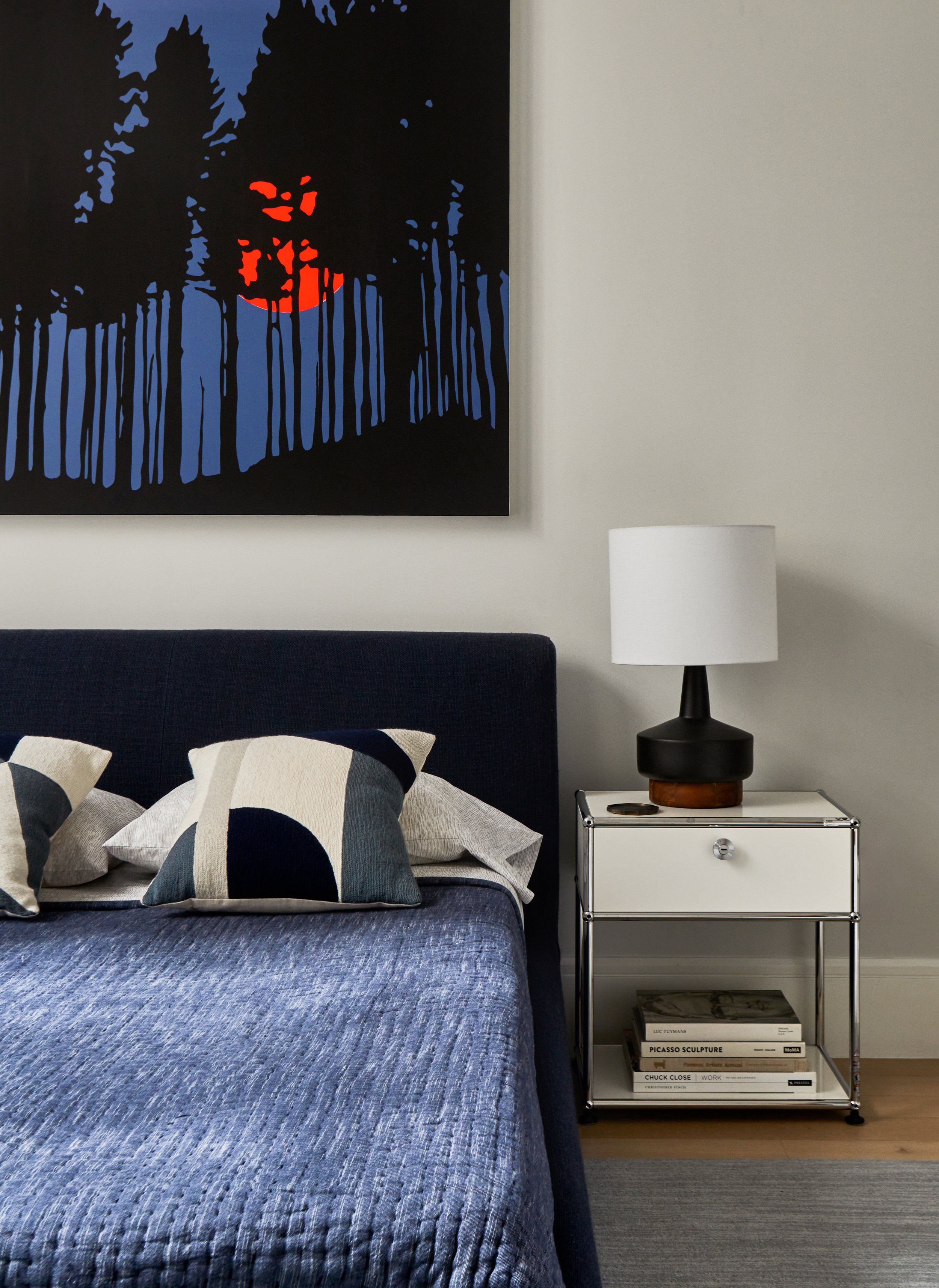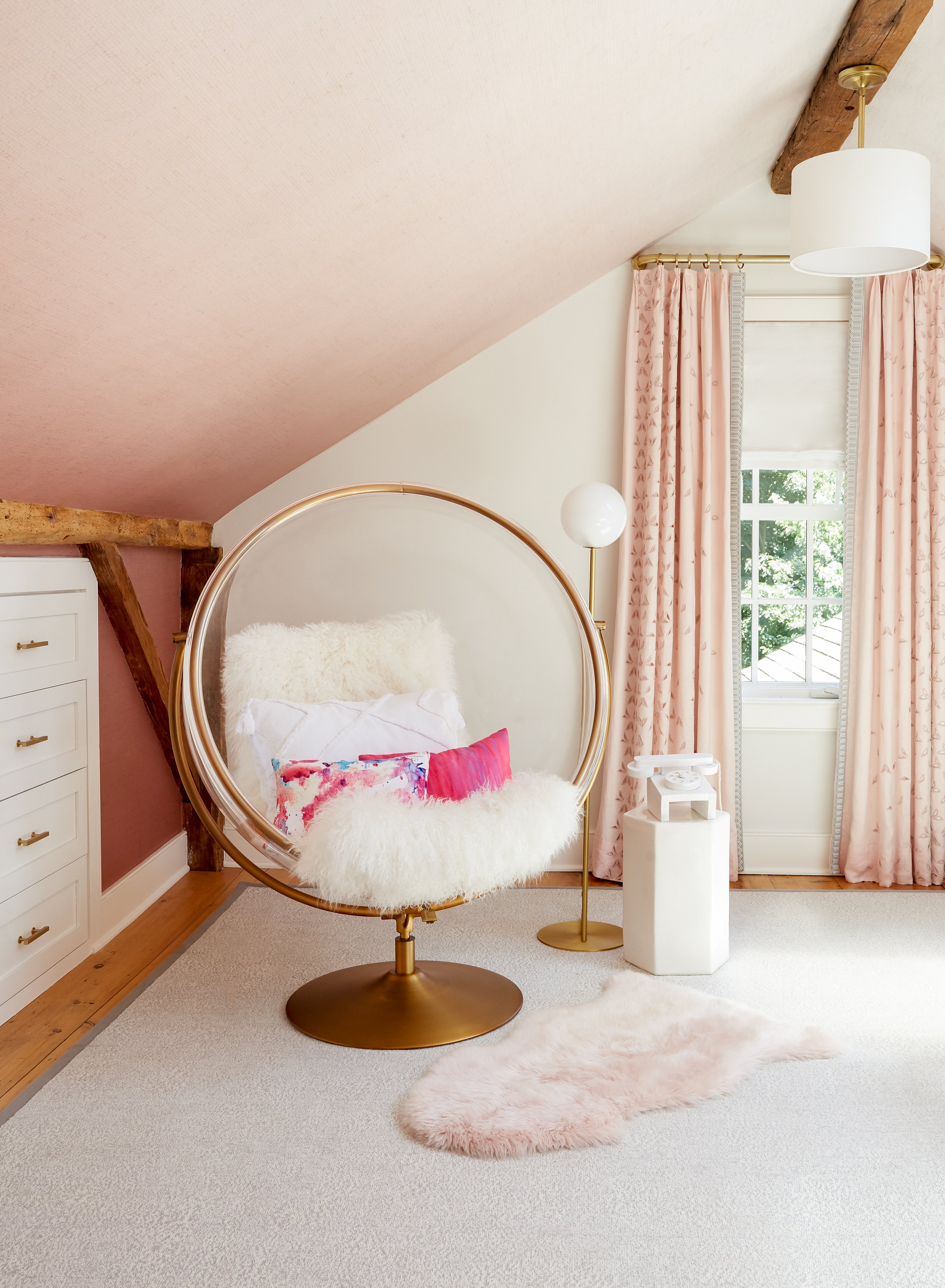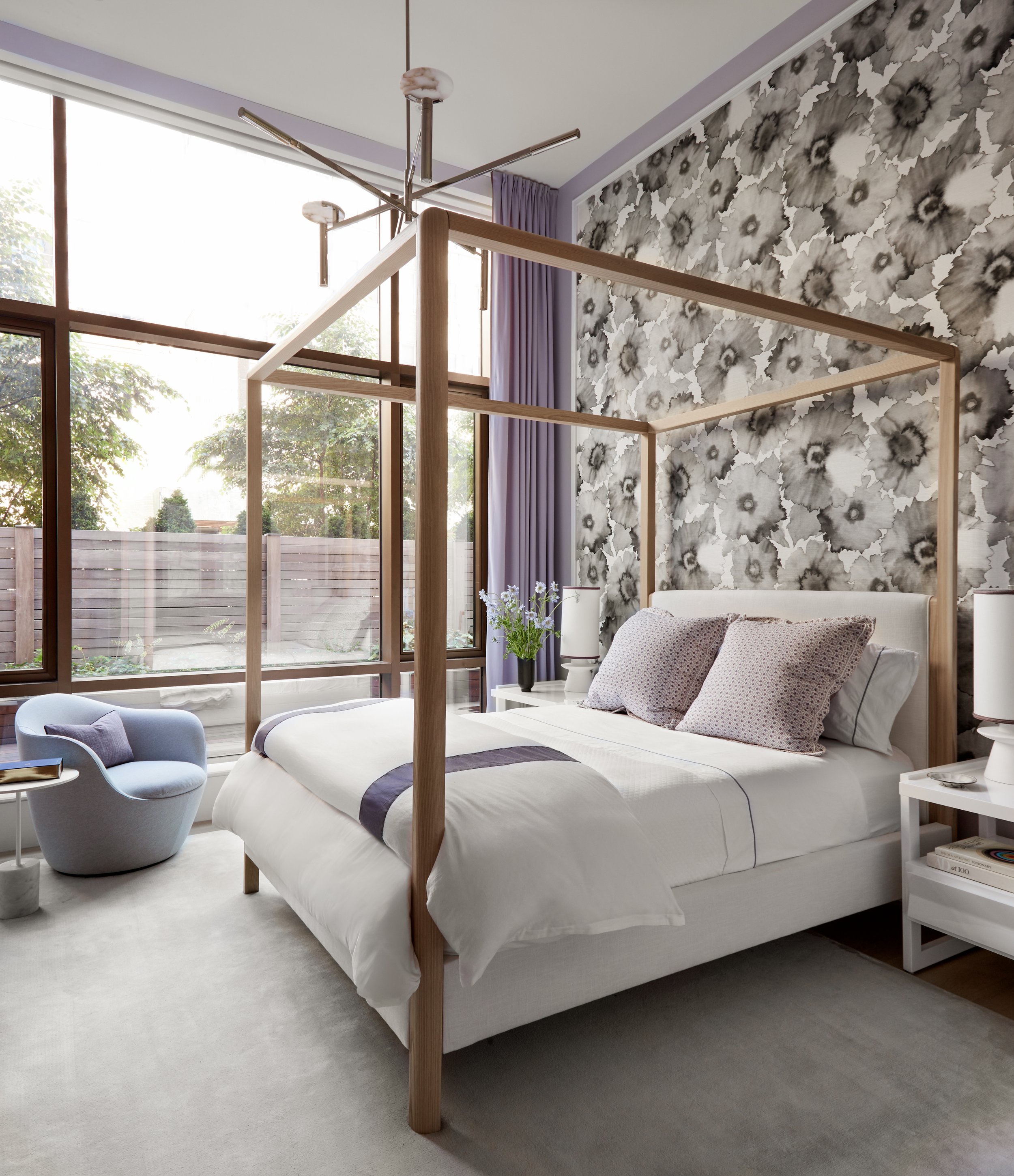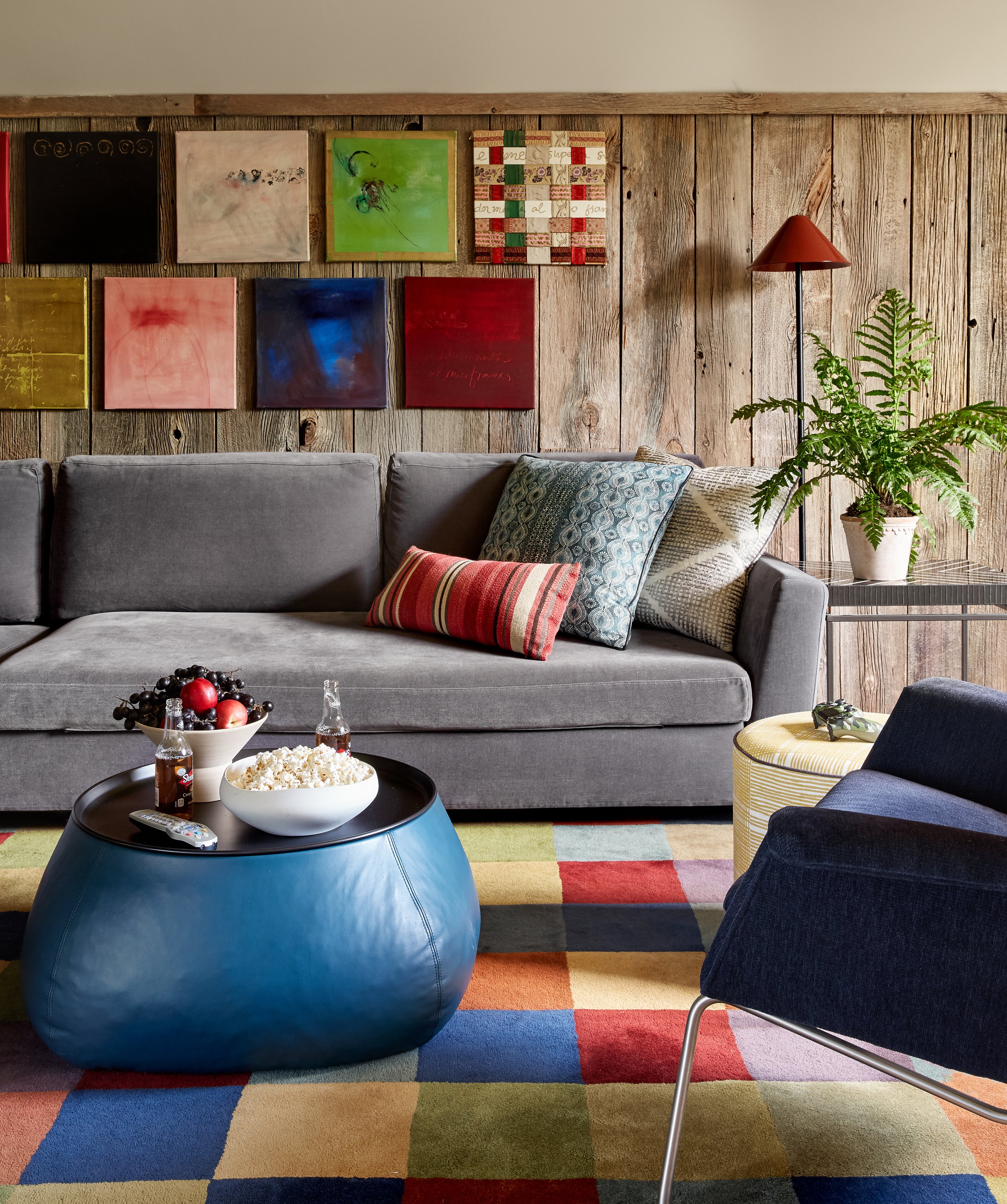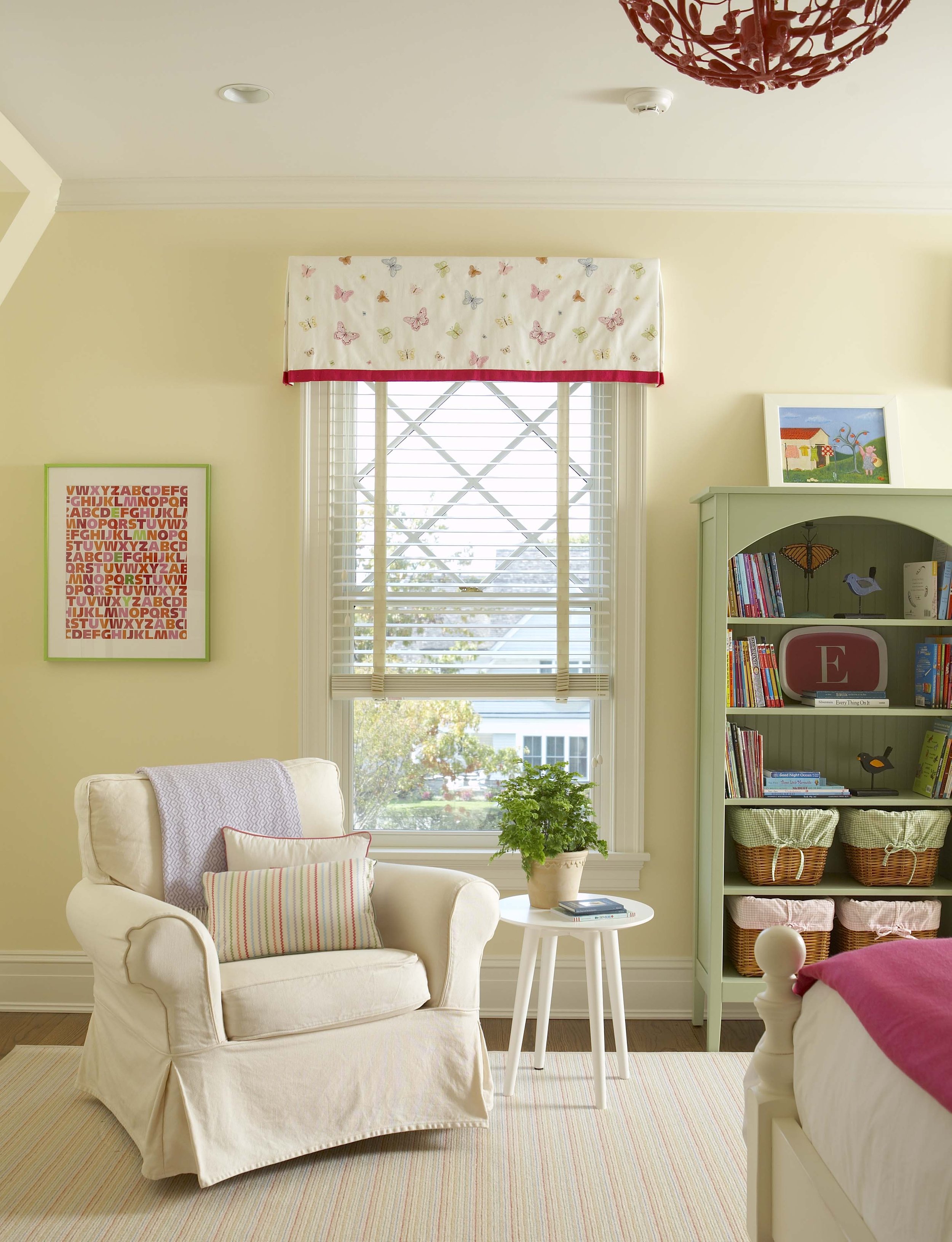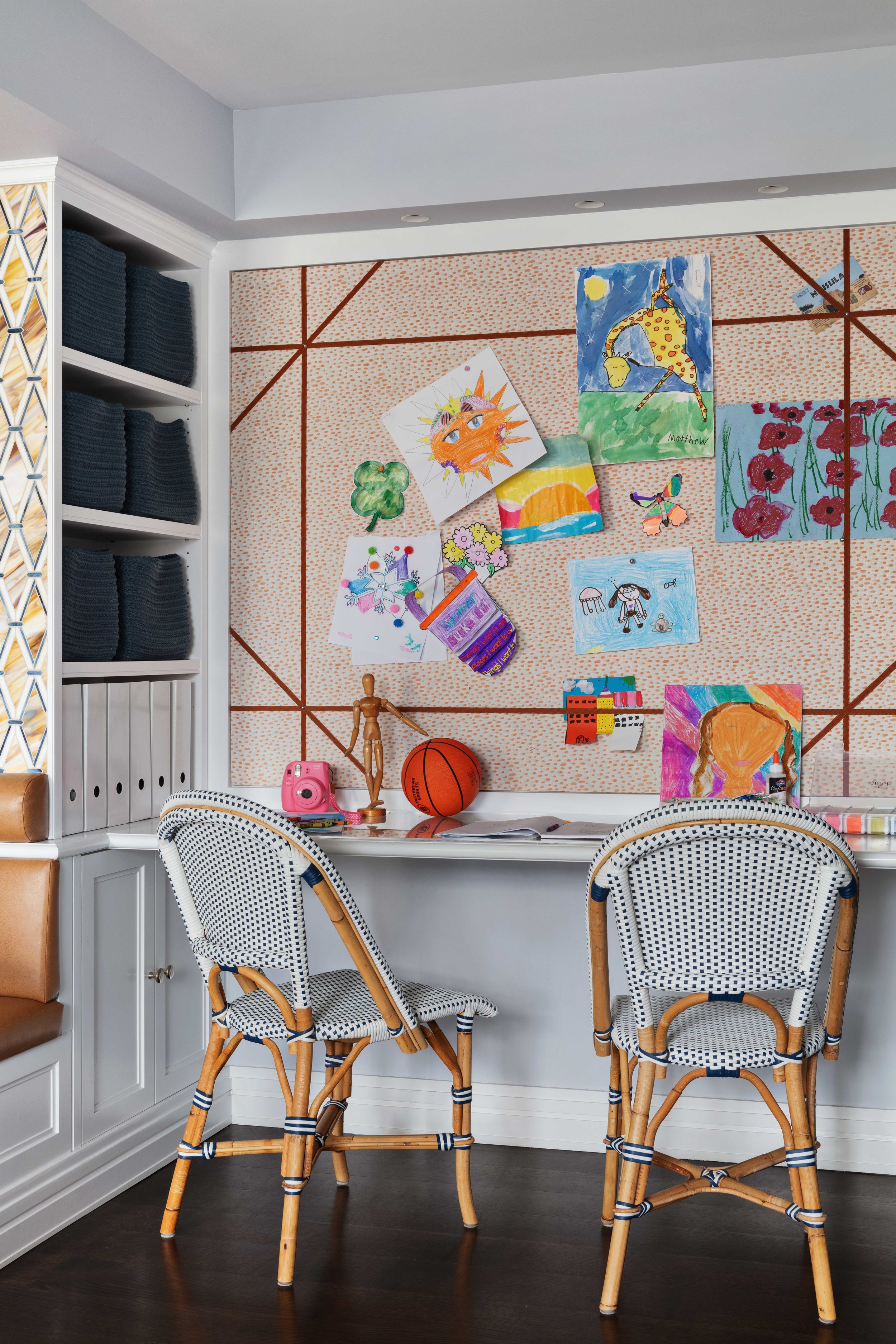A SIMPLE GUIDE FOR KID ROOMS
THINK OF KIDS ROOMS AS 3 STAGES:
Infants and Toddlers 0-4
Kids 5-11-ish
Tweens/Teens 12- College
WITH THIS IN MIND, UNIVERSALLY, WE THINK ABOUT THE FOLLOWING TOPICS WHEN DESIGNING A KIDS SPACE, NO MATTER THE AGE:
1: Invest in Longevity: If the carpet, window treatments, and furniture can’t last an entire “phase” aesthetically or quality-wise, it’s not the right choice. For materials, we’ll say it again and again: Wool rugs are our go-to: In short, they’re easiest to clean and they last longest. Cotton and natural fibers for fabrics feel best and wear beautifully. On the hardest used spots (that nursing or lounge chair, the desk chair) fabric that’s solution-dyed acrylic will clean up best. Or ultra-suede still looks amazing when cleaned properly.
2: Allow for Trends: Fast-changing preferences should be expected, and most importantly, they allow kids ownership over their spaces. A good rule is to save less costly, and shorter-lived goods for just this task. A great example is kids’ sheets and pillowcases, tweens’ toss pillows, teen lamps, toddler wall decor, and everyone’s desk/bookshelf accessories.
3: Help kids learn to help themselves: Include a solution for ALL the functions expected of their space. If you don’t think ahead, kids can’t respond and the earlier you start, the easier it is to instill good habits.
Think about: teaching a toddler to use a hamper and picking up clothes- I can’t guarantee that as a teen they’ll follow through but teach it early and they cannot ever claim it’s a foreign concept. Same with wastebaskets, select a truly functional nightstand (ie with a drawer, and a shelf and adequately sized); shelving at heights that allow younger kids to avail themselves of their favorite books and toys.
4: Storage = Sanity, for all. That cute dresser that was just fine for the infant years is no match for a winter’s worth of tween hoodies and sweatpants. Include storage solutions for different types of clothing, belongings, and desk needs.
5: Let there be Light: Put lighting switches and lamps in places that make sense; and use window treatments that solve for privacy and light control to encourage healthy sleep, circadian rhythm, connection with outdoors, and modesty. Quick note, if there is a nearby electrical outlet, you can add a local switch and hardwire any light fixture in any spot you need. You can also use a Pico light switch that allows for a non-wired, remote switch control over a sconce or switch across a room, and there are multiple solutions for plug adaptors that allow lights to dim, remotely turn on and off, and even be controlled through an app.
6: Safety Matters: With each generation of technology comes a new set of questions. Do think about how electronics are incorporated into your child’s space. Yes- there are loads of pluses to various conveniences but there are downsides too. Screens with cameras built in, Alexa, and similar connected devices, all come with a whole host of privacy concerns that deserve thoughtful consideration. No matter where we all are in the technology landscape, a child’s developing idea of safety starts with an idea of a secure home. Without sounding alarmist, we hear a lot from clients and in our own lives and know it’s a real concern to consider.
7: Kids’ desks can either be a surface for stuff to pile up, a place to focus, or can be left unused. Your reaction to whatever the story, is more a reflection of your ideas vs. your child’s reality regarding study habits. The difference in parent responses to unused or messy desks, we’ve observed, is often tied to the following:
Acknowledge younger kids have different stamina levels than high school kids, and that within each age range, individual kids have different study habits. Some kids can sit for hours at a desk, others can’t stand it.
Ask if a bedroom is even the best place for your child’s study time. Often, it isn’t.
Adults use different methods/setups for different work, kids do too. Maybe your child just isn’t a desk kid.
For the kids who love a desk- a desk chair deserves more investment than a fancy desk.
Work with your child to determine all the organizational bells and whistles that they will actually use. They’ll be more excited and you’ll waste less money on things they’ll never touch.
8: Ownership- Yes you pay the bills. I know this, you know this. But kids want a space to call their own. After designing kids rooms for 5 years straight early in my career, I can tell you; the rooms that are cared for the most by kids are the rooms in which they have a say. Set your boundaries on budget, quality, and maybe even a baseline level of ‘decorated' that you are comfortable with, and work within it with your child. It’s ok to narrow choices, and it may not be the Instagram-worthy image you have in mind- but if they “own” it, they might just treat it better.


